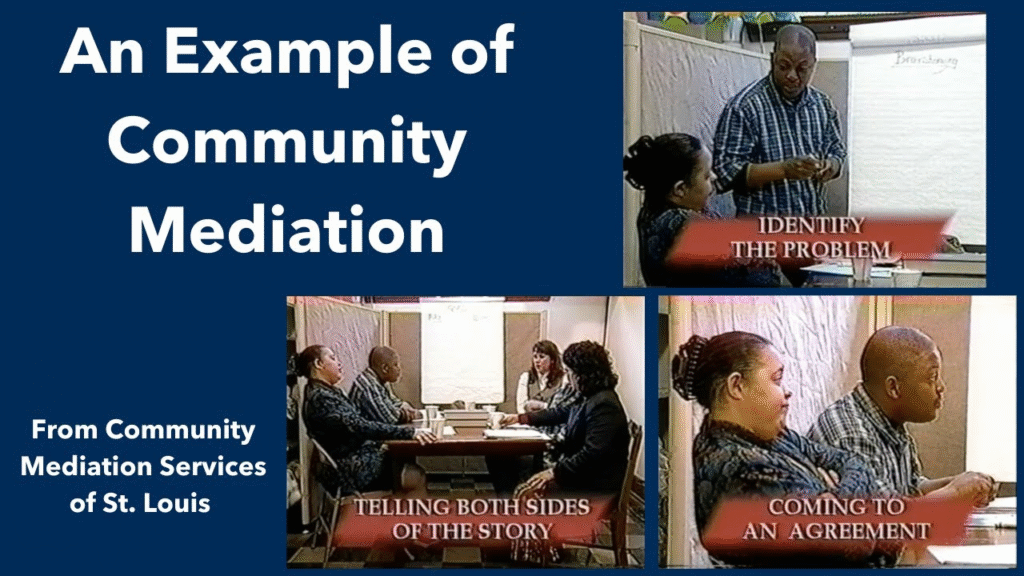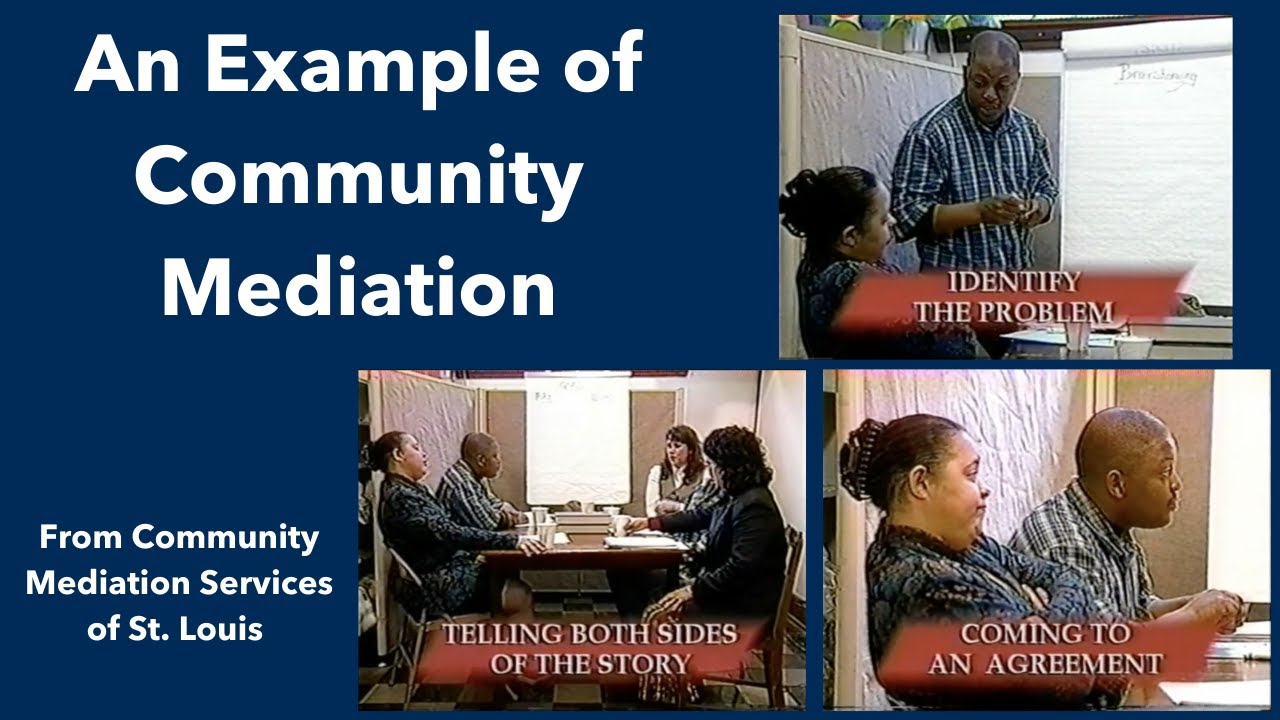
Around the world, legal systems are bogged down by staggering caseloads, resulting in prolonged disputes and justice delayed. Traditional court processes, though vital, are often too slow, expensive, and adversarial for resolving everyday conflicts. This is where Community Mediation Programs (CMPs) emerge as a transformative alternative. By empowering trained local mediators to resolve disputes informally, these programs ease court burdens, promote community harmony, and offer quicker, more personalized resolutions. This article explores the growing impact of CMPs and how they can reshape grassroots justice delivery.
What Is Community Mediation?
Community mediation is a voluntary, confidential, and informal process in which trained neutral mediators assist disputing parties in reaching a mutually acceptable solution. It is typically used for resolving:
- Neighbor disputes
- Family conflicts (non-criminal)
- Landlord-tenant issues
- Consumer grievances
- Minor civil and property disputes
These programs are community-driven, often free or low-cost, and focused on rebuilding relationships instead of assigning blame.
Why Caseloads Are a Growing Concern
Courts globally are inundated with cases. Factors contributing to the overload include:
- Increasing population and legal awareness
- Expanding legal definitions and new laws
- Slow trial procedures and adjournments
- Shortage of judges and infrastructure
Impact of Judicial Backlogs:
- Justice delayed for years
- Emotional and financial toll on parties
- Reduced access to legal redress for the poor
- Distrust in the legal system
How Community Mediation Reduces Court Burden
Community Mediation Programs help relieve formal courts in the following ways:
1. Diverts Minor Disputes from Courts
- Non-violent, low-stakes cases are resolved locally, never entering the formal system.
2. Faster Resolutions
- While courts may take years, mediation often ends disputes in a few days or weeks.
3. Lowers Costs
- Eliminates legal fees, document charges, and multiple hearings for both courts and citizens.
4. Restores Relationships
- Focuses on compromise and understanding, unlike win/lose outcomes in court.
5. Builds Local Capacity
- Empowers communities with conflict-resolution skills and ownership of peace processes.
Table: Courts vs. Community Mediation
| Aspect | Formal Court System | Community Mediation Programs |
|---|---|---|
| Duration | Months to years | Days to weeks |
| Cost | High (lawyers, documents, travel) | Minimal or free |
| Environment | Adversarial and rigid | Collaborative and informal |
| Focus | Legal rights and penalties | Mutual understanding and resolution |
| Outcome | Binding judgment | Mutually agreed solution |
| Caseload Impact | Adds to backlog | Reduces lower court congestion |
Key Components of Successful CMPs
1. Trained Mediators
- Neutral community members trained in conflict resolution and cultural sensitivity.
2. Accessible Venues
- Located in community centers, libraries, or NGOs for convenience and neutrality.
3. Voluntary Participation
- Parties choose to participate, increasing cooperation and buy-in.
4. Confidential Process
- Ensures privacy, especially important in family and neighborhood disputes.
5. Legal Linkages
- Mediation outcomes can be formalized through court recognition if needed.
Overview Table: Benefits of Community Mediation Programs
| Benefit | Explanation |
|---|---|
| Caseload Reduction | Filters out minor disputes from entering court |
| Cost-Effective Justice | Offers low-cost or free resolution options |
| Strengthens Social Cohesion | Encourages dialogue, empathy, and mutual respect |
| Speeds Up Conflict Resolution | Provides faster alternatives to traditional litigation |
| Community Empowerment | Trains citizens to resolve their own conflicts |
| Preventive Legal Culture | Promotes communication before escalation to violence |
Global Examples of CMP Success
- India: Lok Adalats and District Legal Services Authorities promote free, voluntary mediation with impressive settlement rates.
- USA: Community mediation centers across states like Maryland and New York handle neighborhood and family issues, relieving municipal courts.
- Kenya: Village elders and trained mediators resolve land and inheritance disputes before they escalate.
- Philippines: Barangay Justice Systems offer localized conflict resolution for civil cases, mandated by law before formal filings.
Challenges and Limitations
Despite their potential, CMPs face some obstacles:
- Lack of Awareness: Many people are unaware of mediation as an option.
- Perceived Informality: Some parties prefer “official” judgments, doubting mediation outcomes.
- Mediator Bias Risks: In small communities, impartiality may be hard to maintain.
- Enforceability Issues: Agreements are not always legally binding unless formalized.
- Funding Constraints: Many CMPs rely on donations or minimal state support.
The Future of Community Mediation
To scale the impact of CMPs, governments and civil society must:
- Launch awareness campaigns about alternative dispute resolution (ADR).
- Integrate CMPs into formal legal systems for pre-litigation processes.
- Offer legal validation to mediated settlements.
- Provide sustainable funding and training for mediators.
- Encourage cultural adoption through schools, local councils, and NGOs.
3 One-Line FAQs
Q1: What types of disputes are ideal for community mediation?
Neighbor, family, small civil, property, and consumer disputes work best in CMPs.
Q2: Is community mediation legally binding?
It’s not inherently binding, but outcomes can be formalized through the courts.
Q3: How does mediation help reduce court caseloads?
By resolving minor disputes locally, it prevents them from entering the formal judicial system.

